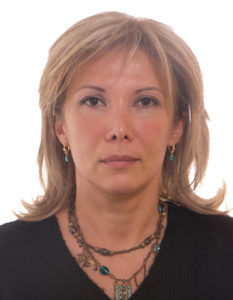
In April 2015, USAID and Janssen Therapeutics officially launched the bedaquiline (BDQ) donation initiative, under which Janssen committed to providing free BDQ to 30,000 patients with multidrug-resistant tuberculosis (MDR-TB) over a four-year period. Along with delamanid, BDQ is one of only two new TB medicines released to the market in over 40 years. These medicines are being used for the treatment of MDR-TB patients, as well as TB patients who have experienced life-altering side effects or developed intolerance or resistance to some second-line TB drugs.
Georgia was the first country to begin implementing the donation program in 2015. We talked to Senior TB Consultant Maya Kavtaradze to learn about the implementation of these new TB medicines in Georgia.
How many MDR-TB patients were in need of treatment in Georgia before the BDQ donation program?
Georgia is one of the first countries to benefit from the USAID‑Janssen Therapeutics BDQ donation program. Medicines donated through the program arrived in the country in the summer of 2015. Georgia has been using bedaquiline (BDQ) and delamanid as a part of compassionate use (CU) therapy for multidrug-resistant and extensively drug-resistant tuberculosis since 2013. In April 2015, Médecins Sans Frontières (MSF), which implements a TB program in Georgia, supported the procurement of BDQ for 60 patients who started treatment. Respectively, at the arrival date of donated BDQ, Georgia already had 64 cases enrolled on treatment with BDQ. 20 of the 64 cases enrolled who started with CU before April 2015. The MSF program covered needs for civilians but not for penitentiaries, where patients were in need of BDQ administration. At the start of the BDQ Donation Program, 20 prisoners were already waiting for the new treatment regimen using BDQ.
It should also be noted that before the BDQ Donation Program, the National TB Program enrolled only those extremely drug-resistant TB (XDR-TB) cases which failed a course of treatment. Currently, XDR and pre-XDR cases have access to BDQ. This access includes even those patients who have intolerance to two or more second-line anti-TB medicines.
How many patients are now receiving treatment through the donation program?
As of March 18, 2016, 136 patients were receiving BDQ in Georgia; 91 of these were receiving BDQ through the donation program.
Had some of those patients already been treated? What complicating factors were common in their treatment?
When BDQ first arrived through the donation program, the most severe cases were enrolled in BDQ treatment, and different concomitant diseases were common. Many of these patients had a record of being disobedient and not complying with the treatment regimens.
Patient errors and lack of adherence to treatment regimens can increase drug resistance and render effective treatments ineffective. What steps are health providers taking to ensure that new TB drugs are being used properly by patients?
One of the main factors contributing to a lack of adherence to TB treatment regimens is the poor management of adverse events. At the time of BDQ arrival in Georgia, this issue was strongly addressed by the National TB Program. With the assistance of USAID’s technical advisors, there was the development of a list and schedule for the baseline, follow-up laboratory tests, and examinations for TB patients using the new medicines to detect and manage adverse drug reactions (ADRs). Corresponding changes in national TB treatment guidelines were being made to reflect the new requirements in terms of baseline and follow-up testing for patients using the new and repurposed TB medicines.
To ensure funding of this extensive baseline testing and follow-up, the National Center for TB and Lung Diseases (NCTBLD) calculated a budget needed per patient for these tests. This was approved by the Ministry of Labor, Health and Social Affairs. Additionally, edicines for ADR management are fully covered by the Global Fund. When patients have access to adequate ADR management, this ensures improved adherence to treatment.
Without the donation program, how much would new TB medicines cost in Georgia?
TB diagnosis and treatment is provided free of charge for TB patients in Georgia. There is no policy where patients must buy medicine or pay for TB treatment, including new and repurposed TB medicines.
How is it determined which patients should receive medicines through the donation program?
Georgia has reached universal coverage for MDR-TB diagnosis and treatment in 2009. Since then, everyone with TB—including MDR- and XDR-TB—has had access to the innovative tools and services they need for rapid diagnosis, treatment, and care. The MDR-TB Consilium, which is a committee of leading TB doctors, discusses all cases and assigns a diagnosis, treatment regimen, and treatment mode (hospitalization or outpatient) for each of them.
Patients get TB medicines from treatment facilities, where the uninterrupted supply of anti-TB medicines is ensured through Global Fund financing and Global Drug Facility direct procurement.
What part has SIAPS Program played in implementing the donation program?
SIAPS provided technical assistance to implement active Drug Safety Monitoring (aDSM). This has included acting a secretariat of the aDSM working group, which consists of all stakeholders in TB control, facilitating coordination meetings, and providing expertise in aDSM implementation in Georgia. SIAPS also supports the NCTBLD in developing the capacity of health professionals in ADR clinical management, recording, and reporting. SIAPS also supports the NCTBLD in implementing the web-based Pharmacovigilance Monitoring System (PViMS) application, developed by SIAPS, which will enable the NTP to monitor the safety and effectiveness of medicines.

